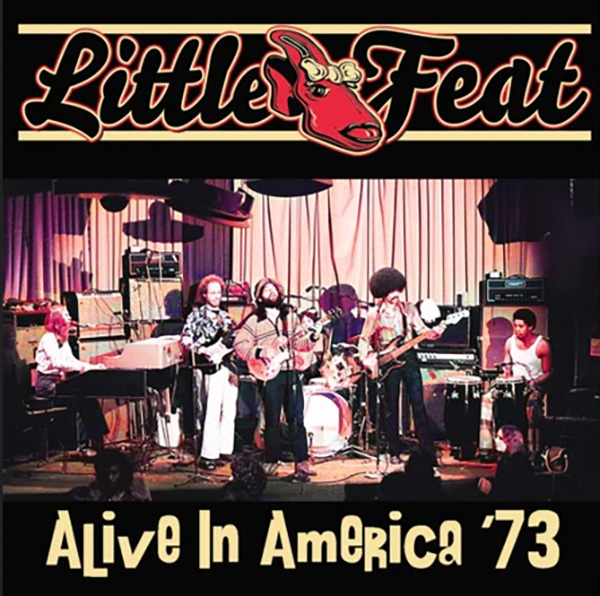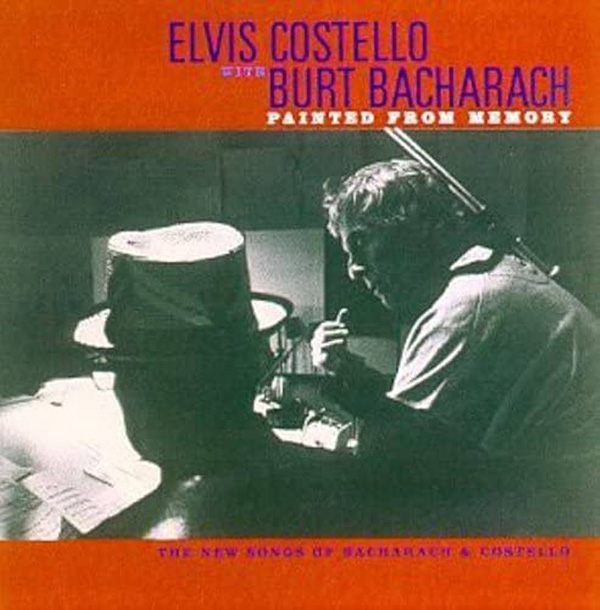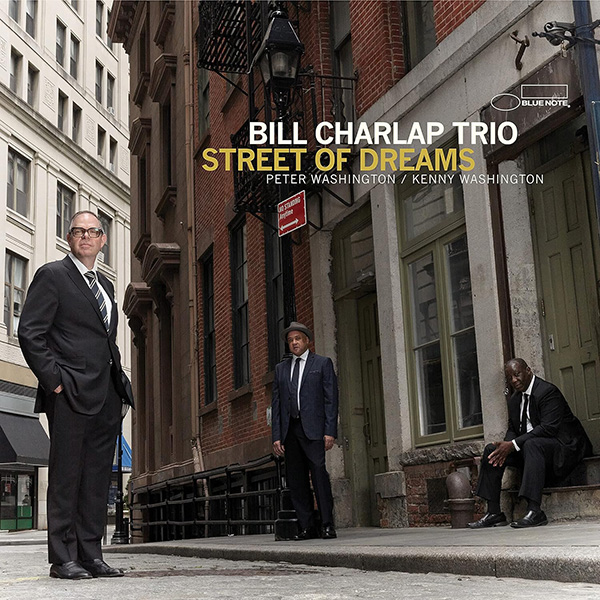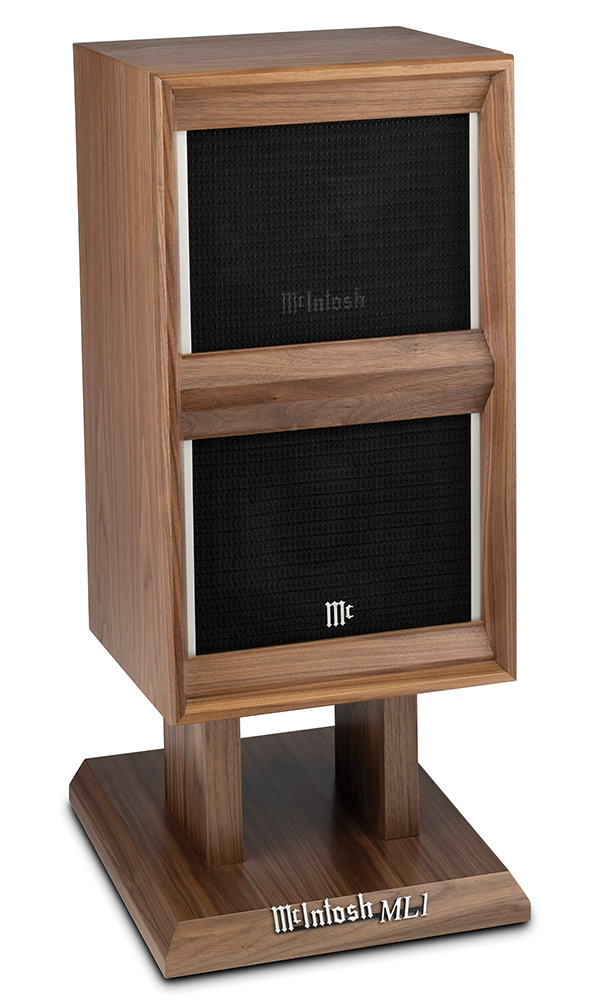| Columns Retired Columns & Blogs |
I get vintage, but.. whaaaaaat? Lol..
Provide an alternate sans wood grille as well?
Nice review Sasha. Yes, Virginia, break-in is real. So are cable performance differences. Ask your cronies!

The ML1 Mk II's came to me new from the McIntosh plant in nearby Binghamton. When I first fired up the ML1 Mk II's, I picked something to play at random. I don't even recall what the recording was. My initial reaction: The upper-mids seemed a bit harsh and busy, very different than the two-way stand-mounted Harbeth C7's that usually occupy this space. Following my new resolution to be patient, I kept playing recordings without sitting in the sweet spot or taking notes. I did not fool around yet with placement or toe-in, and I left the handsome substantial grilles in place. My idea was to let the ML1s warm up to me and not the other way around.
Some days later, I was sitting in the dining room side of our double parlor, away from the hi-fi. I had cued up a new recording posted on Qobuz, Duruflé's oft-recorded Requiem with the Choir of Trinity College Cambridge conducted by Stephen Layton, with Harrison Cole on organ (24/96 FLAC, Hyperion/Qobuz). The music started to billow up and around the two rooms, as if I was sitting in the Church of Saint-Eustache in Paris, the recording venue. The second largest church in Paris, high-Gothic Saint-Eustache houses one of the largest organs in France. It sure sounded like it! This was a huge, magical presentation of a piece that I've heard a lot—who hasn't? It was a fine thing to experience Duruflé's big hit in a fresh, powerful way. The production team (producer Adrian Peacock and engineer David Hinnit) did a fantastic job of capturing a gigantic space. The choir shot up to the stars—and that organ! The McIntosh ML1 Mk II can do pedal points with the best of them.
An audiophile component should be a truth teller; everyone knows the saying "garbage in, garbage out."
I like to order a newly released album as a treat when I listen to new gear. Here I was with the ML1 Mk IIs sounding really good, ready to rock with a freshly opened, fancy-colored, 2.5-sided LP, Little Feat - Alive in America '73 (Renaissance Records RDEG-LP-740). The pressing was fine; the recording was not. The sound on this live Denver date is thin and metallic; nothing is balanced with anything else. I sat regretting my purchase and wondering whether the ML1s might share the blame; certainly they weren't forgiving. I made a quick test, pulling up on Qobuz the fabulous-sounding recent remastering of Waiting for Columbus (Warner Bros. 2BS 3140. 1978).
Now that's how to do a live recording! The Little Feat I know and love could deliver a two-punch knockout; great sound and great swamp roots rock. Those 12" woofers got deep into the backbeat: "All the boys there, at the bar, began to sing along."
Kicking it up a notch
I moved the McIntosh ML1 Mk IIs upstairs and dropped them into the Upstairs System, which is my reference system. The most significant change, other than the generally higher quality of the components, was an increase in available power from 100Wpc to 450Wpc, the latter quantity emerging from my McIntosh MC462 solid state stereo amplifier. Upstairs, I run all separates, including the excellent McIntosh C12000 preamplifier and VPI HW-40 turntable. I positioned the ML1s in the spots usually occupied by my Wilson Sasha Vs, slightly toed in. I connected the speakers to the 8 ohm taps, ready for some serious listening.

But first, I took off the grilles. I am not opposed to grilles on principle, as some audiophiles seem to be. In fact, grilles are in place on three of my four systems. Here, though, it was no contest. The ML1 Mk IIs sound better with the grilles off: more detail and soundstage information; more precise attacks; more, and more distinct, instrumental timbres. The grilles look great and provide real protection, so this is a lifestyle choice.
Reaching for something I knew should sound good, I spun Mobile Fidelity Sound Lab's outstanding 2017 LP pressing of Burt Bacharach and Elvis Costello's wonderful 1998 album, Painted from Memory (Mercury/Universal MFSL 1-475. 2017).
As heard from the McIntosh ML1 Mk IIs, Elvis's vocals were powerful and heartbreaking, with precise diction and texture in every syllable; the same was true of the background vocals. Many of the songs share the common subject, love that is ending or over, songs like "This House Is Empty Now" and "The Sweetest Punch." In some of these songs, it's time to move on, as in "Such Unlikely Lovers." I particularly adore one Elvis lyric in that song: "I'm not saying that there will be violins. / But don't be surprised if they appear"—then Bacharach hits the orchestration hard with exactly that: violins.
With the ML1s, the rhythm section sounded like it was carved out of marble; what could be tighter? In one of my recent scores, I wrote a direction to the drummer: "Jim Keltner solid," and the drummer knew exactly what I wanted (footnote 4). Keltner plays on this album; the sound of his drums locks down the pocket for the whole album. Icing on the cake is Johnny Mandel's string orchestration in the title song.

I listen to a lot of acoustic small-combo jazz recordings. Which state-of-the-art recording would provide an opportunity for the ML1s to sound their best? I tried a couple before it hit me: The Bill Charlap Trio's Street of Dreams (Blue Note B0033904-01), from 2021. Featuring Bill's longtime trio with bassist Peter Washington and drummer Kenny Washington, this is a definitive piano trio album. There are other great piano recordings on my shelf, but I can't think of a better one right now.
The sound of the Steinway B recorded in Studio C at Sear Sound in New York, by the great engineer James Farber, is as good as it gets. No matter how hard Bill hits the low notes or how delicately he caresses the very high ones, it's all there. (I have recently been recording in that same studio, with the same engineer and the same piano, so I know what it should sound like.) Peter Washington's bass also sounds fantastic, creating a rich foundation for Charlap to sit on, also singing when his lines go up high. Kenny Washington's drums never protrude here—they never do live, either; he's that kind of drummer—but they are always there, at the right place at the right time.
All the details I admire about this recording came through in Technicolor with the ML1s; this was great music recreation. A gorgeous ballad like Frank Loesser's "I'll Know," which closes the A-side of the LP, caused my wife to walk in and ask me who was playing. I have had the pleasure of sitting right next to Bill's piano as this trio performed at the Village Vanguard, and this album, now heard with the ML1 Mk IIs, puts me back there, with the greatest living American Songbook pianist.
There was one more test I needed to make, like Oppenheimer. For many years, I have thought that the best-sounding live recording of a rock group is the series of dates The Grateful Dead recorded one week in February 1969, at Bill Graham's Fillmore West auditorium in San Francisco. I have chosen this as a Record to Live and Let Die for, and some of these tapes, along with others from the Avalon Ballroom, became the classic album Live/Dead. The Dead had leased the newly developed "Prototype #2," 16-track, 2" tape machine from the Ampex corporation; they were the first rock group to record live with the new format. The Dead's house sound and recording team, Bob Matthews and Betty Cantor, knew their stuff and got a great result. Remastered and cut to vinyl in 2019, the current LP release also benefits from the Plangent Processes tape restoration technology. I own the 4.5-LP boxed set Fillmore West, February 28th, 1969 (Grateful Dead Productions. 1 590745. 2019).
In Searching for the Sound, his charming memoir, Phil Lesh talks about "dropping his bass bombs" on the crowd. Over the course of their career, The Grateful Dead spent millions on their sound systems. The acid test here sonically has to be what Lesh called their "barn-burner" sequence, "That's It for the Other One." In this set, it fills side four and runs 19 minutes, 54 seconds. After the gentle opening of "Cryptical Envelopment," the two drummers start their patented Celtic groove in 12/8 time and Lesh makes his thundering entrance, kicking off "The Other One."
That entrance is what I focused on. Having been given confidence by McIntosh's promise in the manual that if things got too hot, resetting fuses would kick in, I made the decision to run my reference system louder than I ever have before, to hear what the ML1s were capable of. With my sunglasses on and a glass of Laphroaig in hand for fortification, the countdown began ............... BOOM!!!

What will it be?
When I picked myself up off the floor, it struck me that the McIntosh ML1 Mk II offers a unique, three-prong combination of effs: finesse, firepower, and fun. A pair of these speakers will recreate music in all its variety without blinking, with personality and style to spare. The ML1 Mk II occupies a unique spot in the McIntosh lineup.
If you are looking for a more modern, floorstanding format, consider the sibling McIntosh XR100, one of McIntosh's line-array speakers, or a loudspeaker from some other company. But if you like what I've described here, I recommend the ML1 Mk II for your consideration.

I get vintage, but.. whaaaaaat? Lol..
Provide an alternate sans wood grille as well?
Nice review Sasha. Yes, Virginia, break-in is real. So are cable performance differences. Ask your cronies!

The grill actually improves the measured sound, with a chonk of wood in the middle lol.

Lol! I bet it's necessary now due to the original design parameters for the rest of the speaker.

... upgraded parts in the crossover.

A $12k standmount speaker should not be using low cost caps in its crossover. They're not even high tolerance (5%?!?! - No. Use only 1% or better in a $12k speaker).
My Dynaudio Heritage Specials cost about half of what this speaker does and uses significantly better quality parts (top of the line Mundorf caps and WBT terminals, plus the amazeballs Esotar 3 tweeter, etc). I blame the new owners at McIntosh. A private equity company now owns the brand group, so I expect them to get "Gordon Gekko'd" over the next few years and parted out. Sonus Faber is also part of the group. Same crap Sound United did to Boston Acoustics (which is now defunct). Wonder what they'd want for the brand name?

would deliver so much more fidelity, musicality and finesse. Yeah, you would spend more for a similar sized box. Sadly probably over the heads of most potential purchasers of this speaker. But Macintosh is an American lifestyle brand so you get what you get: a Ford F150 of a speaker. PS - of the new versions of old American brands, I think Klipsch seems to be the most authentic though one of those new JBLs was admittedly a lot of fun to listen to for hard rock.

With those stupid LED's under the tubes.

And the JBL's I want to hear are the 4367's that were reviewed here a couple years ago - 15" + horn and measures great.

... about double the price of the ML1 MK II, for the same $12K one could buy a pair of Harbeth SHL5plus XD speakers, AND a pair of REL Classic 99 subwoofers - which have a 12" driver (and a 450W amplifier).
"Fidelity, musicality and finesse" plus deep, powerful bass response.
https://harbeth.co.uk/shl5plus-xd-loudspeaker/
https://rel.net/uk/shop/powered-subwoofers/classic/classic-99/

While a 12" woofer is going to move a lot of air and shake the foundations in a way other speakers physcally cannot, I would agree 1000% that the Harbeth/REL combo you described would be way more musical and beautiful sounding. Of course, I haven't heard these behemoths but they get disqualified from my world immediately without a silk or sophisticated soft dome tweeter like the Harbeths. I have heard the Harbeths in demo and it was one of the few times I felt some regret over the speakers I had purchased a few months before. Beautiful ripe bass and smooth sweet highs. Maybe they wouldn't play Van Halen or Wu-Tang Clan as well as these Macintosh speakers but in almost everything else I bet there would be no comparison.

I'm sure it's just me, but I do not get the love for Mac gear.

They just love the colour blue, but where is it here???
And yes those Bennic caps are bottom of the barrel.
Cheers George

the love for the older built like a freakin' tank Mac's that last for decades, but not the newer built to a price point stuff. They were aquired by a private equity firm in 2022, and quality is never in their equations.

Do not get how they could be so out of of touch with audiophiles and the generally informed public.
And to agree to a review when there are some glaring issues like parts quality for this price point. I would still think PE firms know their market. Pfft.

I love my C22/MC275 amps, but these are a stretch. At $12,000, there's some very tough competition, and so much about these seems like a marketing grab. In addition to the specifics mentioned above, we should add the bases--do those look well-engineered for rigidity. isolation, etc to you? I suppose I would listen if I was already in the store and the dealer insisted...

Truer words were never spoken. Dynamic cones and domes in a wooden box.
12K/pair. Perfect match for the 28K vacuum tube amp in the next review.Back to the future. Audiophilia is truly a strange thing.
Value/performance inversely proportional to price. But I still read these reviews. The subjective descriptions of sound are mind-bending. I marvel at the ability of the writer to describe the sound of an amp or a speaker in terms that defy any rational real-world experience of home audio. But maybe imagination is what's important. Maybe I lack imagination.

You whine about the ultra expensive stuff then ignore the $300 streaming integrated (aka the new jack receiver) review posted yesterday.
As far as the subjective descriptions; perhaps they, like myself, have synesthesia. JCA has said he has it, and JVS' descriptions sound like he has it - he once described a golden glow within the sound that I've literally experienced myself. It wouldn't surprise me if HR and KM have it too. When I say something sounds grey, I literally see the color grey overlaid on the sound (phase issues in the treble cause this for me). If I say it sounds like stucco, I literally see/feel that texture of smearing when I hear the sound (DSD, don't know why, and always white stucco). The brain is weird and wonderful, and they're all different.
Synesthesia, at least for me, is like a cheat code for writing about sound since I literally have both visual and tactile sensations along with it. Unfortunately, I also have misophonia with a few sounds. Like the sound of someone licking paper, especially construction paper... aagh, just thinking about it squicks me out hard. When I was reviewing equipment, once I got a handle on the sound the writing was usually quick and easy.
Thinking your experience of the world is the same as anyone else's is the height of arrogance. If we were all the same humanity would have gone extinct long ago.

Every now and then I'm powerless to resist my compulsion to respond.
I'm working on it.

(high, low, hard, soft, sweet, cold etc) are actually metaphorical. There must be a good reason for that, but it eludes me thus far.

When I say something sounds "grey", such as Outkast's otherwise excellent song "ATLiens," I literally mean I see the color grey while listening, with a roughly 90 to 95 percent transparency. It's not a metaphor, it's literal and it's how I hear high frequency phase issues. A doorbell literally shot squiggly red geometric shapes out towards me once. luckily, my visual synesthesia is very rarely that pronounced. Texture/tactile is a bit stronger for me.
Bruce Swedien has said it can be a curse to have synesthesia (he had it), because it can be distracting while trying to mix a record, such as Off the Wall or Thriller. He also used it as a tool, saying he knew the tonal balance of a song mix was right when it sounded golden. As in he saw a golden hue while listening. It's half the reason recording studios are often dimly lit. Rock-n-roll is the other half (metaphorically, wink wink, nudge nudge, know what I mean). 5 to 15 percent of the population has synesthesia, but anecdotally it's higher among sound professionals (sound is more interesting when you can see/feel/taste/smell it).
Woody, I assume is more mundane - it sounds like the resonance frequency of a log. I occasionally feel a woody texture, but it's very rare. Sometimes what people call woody sounds brown of various shades to me, but not always. IT IS NOT THE BROWN NOTE. "Woody" is around 300 to 500 Hertz.
High/low; frequency? so it's a grouping of numerical values.
warm/cool - metaphor, for me at least
hard - literal for me, usually really bad high frequency phase issues. or the NAD M23 into large Focal speakers (class D phase issues into very bright beryllium tweeter speakers). It literally sounded/felt like the edge of an off-white cultured marble countertop was hitting me regardless of volume. Hard and unpleasant. And a very bad pairing of amp and speaker. This may explain why I prefer soft dome tweeters (resonance behavior).
soft - can be literal for me, also metaphorical
sweet - metaphor for me

Very interesting supamark! It is a helpful, if not trippy, tool for me as well. I see "sound bubbles" if the system is set up well and capable of producing them. I recently had the pleasure to listen to two systems belonging to members of a local audio club. They were relatively equal with regard to price (i.e., "if you need to ask" expensive). One produced said bubbles, the other did not. You can guess which one I preferred.
I also "see" different materials, especially metals but sometimes fabrics, mostly in the treble region. The "whiter" the material, the less I like it. If I see aluminium or steel (separate from the actual tweeter material - it could be a metal or fabric dome) I run for the hills!

..since I'm not familiar with synesthetic experiences. It still never fails to amaze me that there is no literal vocabulary peculiar to sonic qualities and one is forced to rely on various metaphors; it also makes it extremely difficult for one to communicate one's inner perception of sound/music in a meaningful and useful way - hence the usual argument "I don't (think I) hear it, so you don't hear it either!"

These speakers in no way reflect poorly on the current owner of McIntosh. Rather than indicate a changed approach for the company, they perfectly align with the market position that Mc speakers have always filled.